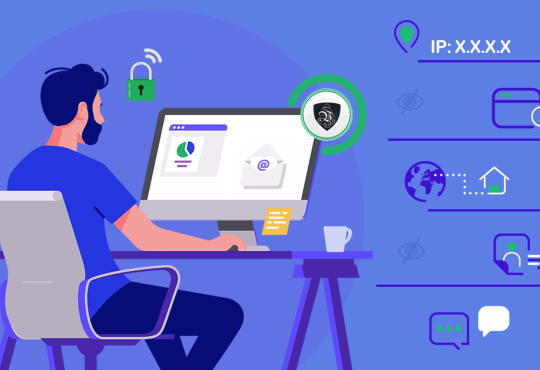
What is a UPS system?
As long as the power is on, the UPS provides regulated power to the electrical outlet and keeps the internal battery charged. It also protects your valuable devices and data from power surges, abnormal voltages, and other electrical problems. In the event of a power failure, the UPS system provides backup power via the built-in battery. This ensures that your devices stay on even during a power outage. UPS systems are sometimes also called uninterruptible power supplies or battery backup systems.
Why do I need a UPS?

Whether it’s an outdated power grid, increased demand for electricity, bad weather, faulty wiring, or devices connected to the AC power grid, your devices are always at risk for power problems. Even a short-term power outage can damage your valuable electronic devices or destroy irreplaceable data such as business documents or family photos. A UPS is a good way to avoid this.
Is it complicated to use a UPS system?

UPS systems are easy to use. All you have to do is plug the UPS into an electrical outlet, plug your devices into the UPS outlet and turn the UPS on. Most UPS systems have additional features, such as communication with a computer and default settings, but using additional features is optional.
Why is a UPS system a good investment?
A UPS system can prevent damage, data loss, and downtime for a fraction of the cost of the equipment, data, and performance to be protected. It conditions incoming AC power, protects against general power problems, and has enough battery capacity to withstand most power outages. Fuse. With a wide range of models to choose from, we can provide a cost-effective solution to your needs.

For what types of power problems are UPSs suitable?
Blackout:
A power failure, also known as a blackout or powerfailure, is a total loss of electrical power. Causes include accidents, grid equipment failures, tripped circuit breakers, bad weather, and excessive power requirements. Blackouts can last from seconds to minutes or longer. Power outages can result in lost productivity, lost revenue, system failures, and lost data.

Brownout:
A prolonged lack of grid voltage, which can last from a few minutes to several hours and is also known as a brownout, voltage drop, or power failure. Blackouts are caused by excessive demand for electricity in a building or across the grid and can be exacerbated by faulty electrical circuits. A number of local blackouts occur when building electrical circuits are overloaded by turning air conditioners or chillers on and off. Power outages can result in equipment failure, overheating, progressive damage, instability, and data loss.
Overvoltage:
A power surge, also known as an electrical shock, is essentially the opposite of a power outage. Unlike an Undervoltage, a surge is an increase in voltage that lasts from a few seconds to several minutes, longer than a power surge. A surge occurs when the power supply exceeds the perceived power of the connected devices and can result in data loss, device damage, flickering light bulbs, overheating, and device distortion.
Spikes/Surges:
A spike or surge is a momentary (transient) increase in voltage. A spike lasts more than 3 nanoseconds and a surge of fewer than 3 nanoseconds. They can result in catastrophic damage to devices, system freezing, data corruption, and other damage that reduces device performance. They can be caused by load variations, short circuits, or lightning strikes from power providers. During the storm season, power surges and spikes are more common due to increased storm activity and sudden restoration of power after a power outage.
Line Noise:
Line noise includes electromagnetic interference (EMI), radio frequency interference (RFI), harmonic distortion, and waveform distortion in the network. Network noise is not visible or harmful, but it can lead to electronic circuit damage, data corruption, audio/video quality problems, and system disturbances. Grid noise is amplified by lightning, grid voltage variations, radio transmissions, fluorescent lights, and the cyclic operation of air conditioners, refrigerators, and fans, which can cause disturbances to local electrical circuits.
What to consider when choosing a UPS system
Choosing the right UPS system can be a daunting task, even for most IT connoisseurs. Here are five basic questions to ask yourself to make the right decision.
1. Do I need a network/server UPS or a desktop UPS?
Network/server UPS systems protect devices in high-availability environments such as data centers. A desktop UPS system protects electronic devices such as computers and peripherals in the home or office.
If you answered “yes” to any of these questions, we recommend you choose a network/server UPS.
- Does it support critical devices?
- Does it support loads of 750W or more?
- Is the UPS installed in a rack or rack cabinet?
- Do you have devices that require a pure sine wave?
- Do you want to extend the operating time?
- Can the UPS handle high voltage loads (200-250VAC)?
2. How much power do you need?
To estimate your power requirements, add up the capacities of all the devices you want to connect. (The number of watts is listed in the device manufacturer’s instructions. If amps are listed, multiply that value by the AC voltage to estimate the power. Check the UPS specifications to determine which model meets your needs. 3.
3. how do I connect input and output power?
Check the specifications of the UPS to ensure that it can be connected to a compatible AC circuit/outlet at the installation site. Also, check that the UPS outlets are compatible with the outlets and voltages of the devices you are using; connecting one or more PDUs to the UPS output can provide additional outlets, placement flexibility, and control options.
4. What is the battery life of the UPS?
At 80% load, the battery supplied with the UPS typically provides 5-10 minutes of operation. This is enough to withstand most power outages. If you need longer runtime, choose a UPS system that supports the connection of an external battery set. We provide detailed battery life data for each UPS system, including the external battery pack configuration.
5. What other UPS features do I need?
The various UPS systems have a wide range of features to suit all needs and budgets. You can find the right model for your application on our website.
Sizing the UPS for efficiency and growth
Choosing the right UPS size is the first step in creating an efficient system. The more the UPS capacity matches the load, the more efficient the UPS is. However, a UPS with insufficient capacity may not support your devices in the event of a power outage or other power problems.
To find the right balance, you need to consider two basic questions: How much power is needed to support the connected devices (power) and how long will the UPS support the devices during a power outage (runtime)?
Power
The power rating of a UPS system is the maximum power the unit can provide to support the connected devices. It is usually measured in volt-amperes (VA). To ensure sufficient protection and allow for growth, we recommend using a UPS whose VA rating exceeds the total power consumption of the devices to be protected by at least 15%.
Operating time
The operating time is the time during which the UPS is able to operate the connected devices with battery power at a given charge level. The run time is important because it indicates how long the devices can operate during a power failure before the UPS battery is depleted. Run times can be extended by choosing a UPS with a higher battery capacity or by adding external battery packs to a UPS that accepts them.
How to size a UPS?
You need a UPS with enough capacity to handle a full load and a battery system (internal or with optional external battery packs) that can support that load long enough to safely restore power or shut down systems. Anticipated growth and redundancy needs must also be considered. There is also a UPS Finder tool that automates the sizing process, but we’ll look at the calculations later:
- Make a list of all devices that need to be connected to the UPS.
- Read the nameplate of each device and note the voltage and current. Multiply the voltage and current for each device to obtain the VA value.
Note: If the device power is listed in watts, simply convert it to VA by dividing the power rating by the device’s power factor, which is typically 1.0 for blade servers and other network equipment.
- Add up all the VA values to get the total VA requirement for the devices connected to the UPS.
- To account for device growth, you need a UPS with a higher VA than the total VA demand calculated in step 3. We generally recommend starting with at least 15% growth over a five-year period, although your actual growth plans may require a larger provision.
- Multiply the initial capacity requirement by 1.15 (i.e. 1.0 to account for the initial capacity requirement and 0.15 to account for 15% growth).
Note: Adapt this calculation for other growth rates by changing the decimal numbers (e.g., multiply by 1.1 for 10% growth, multiply by 1.25 for 25% growth).
Sizing for redundancy
Critical loads require an extra level of protection in case of human error or other disruptions. Sizing the UPS with redundancy in mind can provide this extra level of protection. Redundancy can be achieved by connecting multiple UPS systems (or a modular UPS system) in parallel to a common critical load bus (e.g., ATS PDU).
The most common redundancy architecture is N+1, where N represents the number of units (or modules) required to support the load. Therefore, N+1 configurations contain one more block (+1) than is needed for the load. This means that if one unit fails, the remaining units can continue to support the critical load without interruption.




